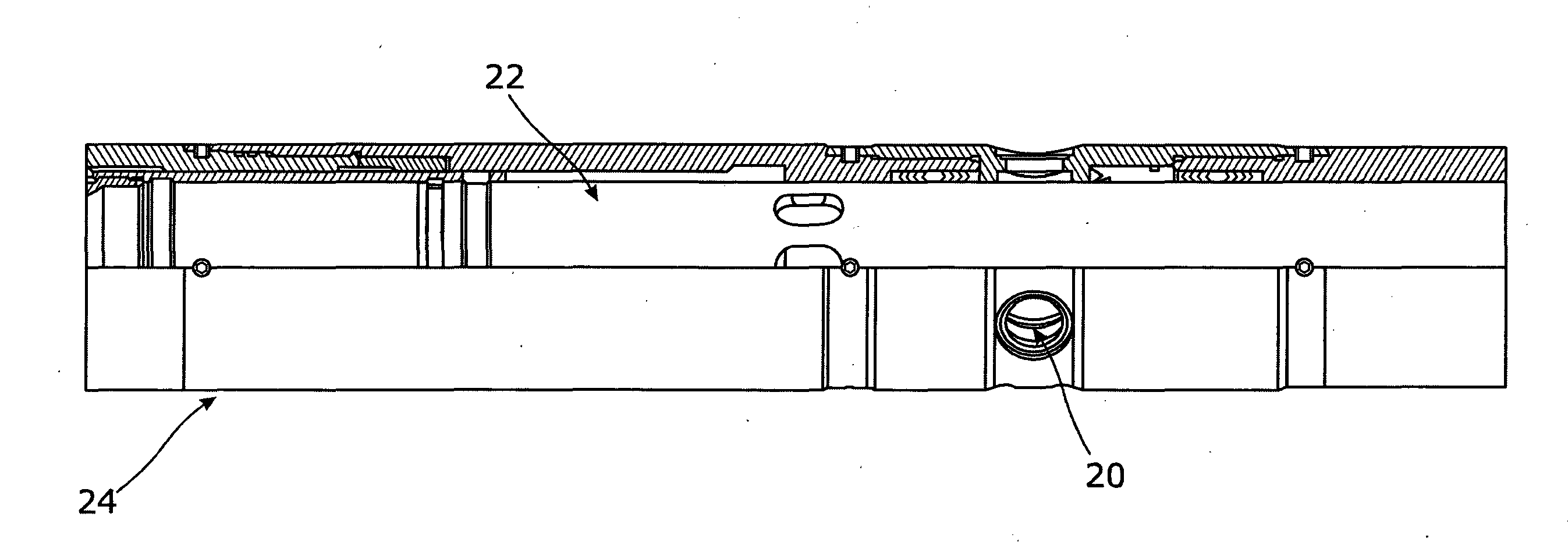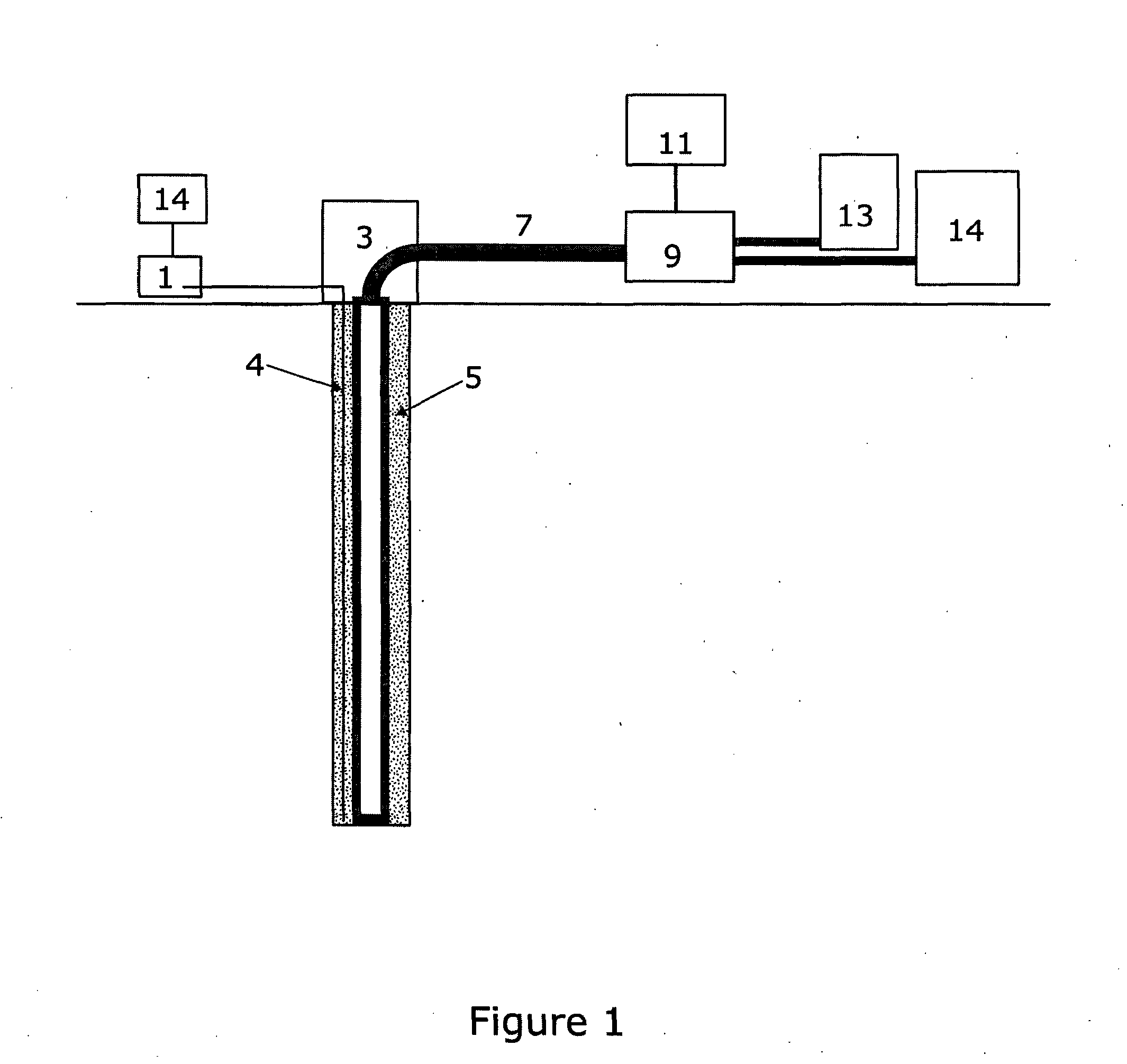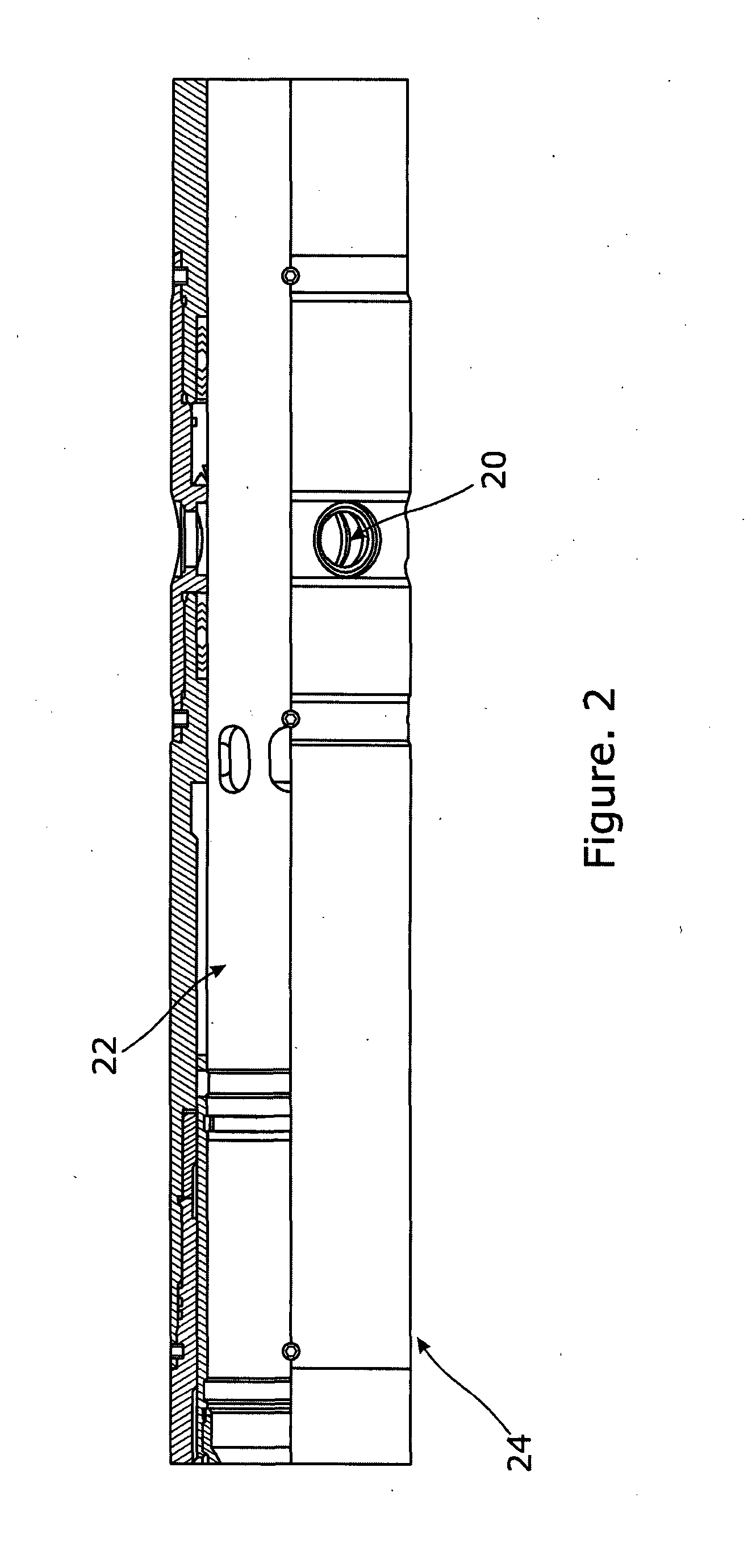Very little real-time monitoring information is typically available.
A number of issues can be associated with the fracturing process, pack off and
cement washout being two of the more concerning, independent of the method used.
When considering a sliding-sleeve based process, issues such as ball failure and unsuccessful valve operation are two prominent issues.
Pack off is a
scenario whereby too much proppant enters a given fracture cluster, to the extent that a particular fracture channel becomes completely blocked with an excessive amount of proppant.
Such a situation can arise when a given cluster initially fractures well, and thus readily takes additional fracture fluid, but thereafter fails to continue to fracture, possibly due to variations in the structural strength of the local formation.
In such a situation this can result in that particular cluster not receiving sufficient fracturing whilst all other clusters within the given
fracture zone receive too greater volume of fracture fluid.
Thus a situation could arise whereby the packed off cluster never fractures to the required level and the remaining clusters become over fractured, with the fractures associated with these clusters either extending too far into the reservoir or the fissures simply opening too wide.
In either case a greater than necessary amount of fracture fluid and proppant will have unnecessarily have been used for that zone.
Moreover such a situation would result in a suboptimal fractured zone, which may result in lower than optimal production.
A similar, but different, issue related to the fracturing of a multi-cluster zone is one where either an individual or certain number of clusters within a
fracture zone fracture more readily than other clusters within that zone.
This can typically happen as a result of varying rock
hardness across a given zone, and can have the same net result as that of a pack off issue, that is insufficient fracturing of some clusters within a zone whilst the remaining clusters subsequently receive too greater fracturing, again leading to a suboptimal production from the zone in question.
In both situations it is difficult for the operator to detect the occurrence of this issue.
In both cases simply increasing either the fracture fluid flow rate or pressure would not remedy the situation.
Such action would simply lead to a situation where the clusters that were already successfully fracturing would fracture to an even greater extent, and the clusters failing to correctly fracture would continue to fracture in a suboptimal manner, the net result being no greater volume of product being released from the reservoir.
While it is difficult for the operator to detect the occurrence of either pack off or suboptimal fracture distribution across a given zone, it is equally difficult for the operator to easily
gain insight into whether the application of a diverter has been successful using only the single-point
wellhead pressure and flow rate
instrumentation.
As such, overly fracturing any given cluster within a well could lead to a situation whereby the associated fissures simply extend too far into the reservoir, to a point where they may intersect with a neighbouring well.
Such a situation could lead to an increase in product extraction from the fractured well but to the detriment of a corresponding reduction of product extraction from the intersected well.
It is again difficult for the operator to
gain this knowledge with the conventional
instrumentation.
A further issue associated with hydraulic fracturing of cased wellbores is that of
cement washout.
However, it is not uncommon for this cement washout to exceed the expected spatial bounds, persisting for far longer periods than anticipated.
However, once this void has been created, situations may arise whereby the cement washout process fails to terminate and the
void volume expands beyond desired limits, for example due to suboptimal cement bonds.
In other words, situations arise in which fracturing initiates, but the cement washout process persists for too long, or whereby fracturing does not initiate as expected and only the cement washout process persists, eroding more and more casing cement.
If the former, one concern would be the waste for fracture fluid and proppant, causing an unnecessary operational cost increase, but more concerning is a situation whereby the washout either extends from one
fracture zone to another, or from one fracture zone a considerable distance towards, or even all the way to the
wellhead.
The former can lead to a situation where when fracturing one zone the operator is unknowingly pumping fracture fluid to a previously (or yet to be) fractured zone.
Thus not optimally fracturing the intended zone, as well as possibly also over fracturing a previously fracture zone.
In certain situations, integrity issues with such casing joints could arise, either as a result of a suboptimal connection completion during installation, or as a result of degrading over time.
Regarding prominent issues associated with the sliding-sleeve fracturing process, the most catastrophic issue is that of ball failure in which a given fracture zone ball either disintegrates during operation or, as a result of the
fluid pressure, extrudes through the (final) hard seat sliding
sleeve valve.
This would lead to a situation where, if left undetected, the current zone would again fail to optimally fracture and potentially the previously fractured stage could again subsequently become over fractured.
As before, the operator is reliant on
single point wellhead pressure and flow rate
instrumentation to provide indication of the occurrence of such an issue, with a
short duration large drop in pressure indicative of this problem, but again surety of interpretation is not always readily achieved with this approach.
This is a common problem, and in the extreme this can lead to a well which may have one zone drastically over-fractured and one that is fractured to a minimum extent, if at all.
A further problem associated with sliding-sleeve fracturing is that of unsuccessful valve operation.
That is, it is possible, during completion of the well that a valve either becomes damaged of fouled in someway, for example a valve can become partially contaminated with casing cement.
Such a situation can lead to a situation whereby subsequent correct operation of that valve would potentially be improbable.
In this case it is common for the valve to become stuck, leading to a situation where the valve (either initially or permanently) fails to open thus not allowing fracture fluid to exit the casing and penetrate the formation to initiate fracturing.
In this situation it will be extremely difficult for the operator to detect with conventional wellhead equipment.
In the event that the issue is correctly detected uncertainty may still arise around which valve is experiencing incorrect operation in a multi-cluster.
More fundamentally though, an
operational problem can arise whereby an operator inadvertently deploys the incorrect ball for a given stage.
For example if the ball required for the fracturing of an upper zone (a ‘large’
diameter ball) is mistakenly deployed when operationally it is required to fracture a lower stage (a ‘small
diameter ball) a situation could arise whereby the operator is unknowingly fracturing the wrong section of the well completely.
Single-point wellhead instrumentation may provide indication of such a
scenario but the operator may fail to correctly interpret such information.
 Login to View More
Login to View More  Login to View More
Login to View More 


